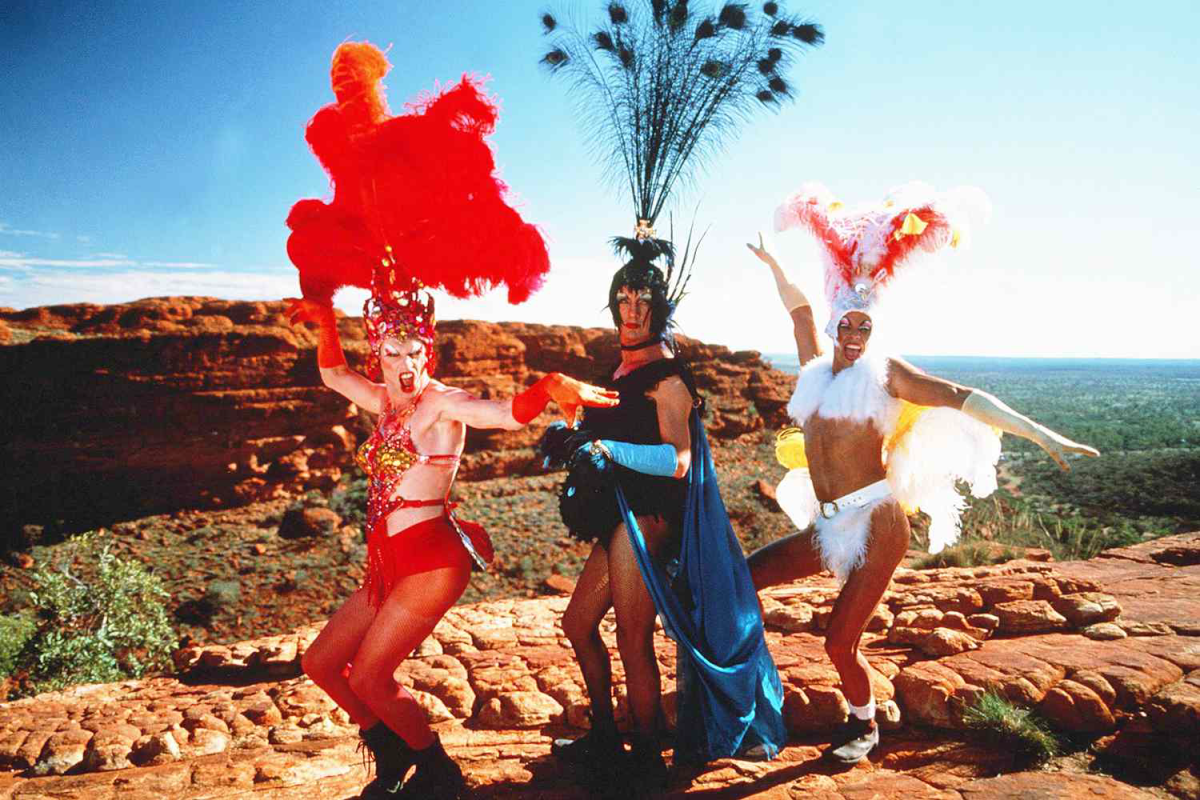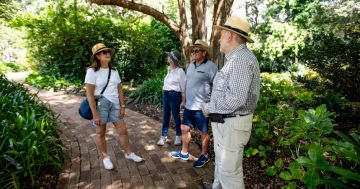
One of Australia’s most iconic and beloved films, The Adventures of Priscilla, Queen of the Desert, was released in 1994, when Australia had 10 million fewer residents. Photo: NFSA.
Thirty years ago the world was a very different place, although sadly there are some things that have never changed, wars and hatred among them.
It was only last month that the Democratic Republic of the Congo and Rwanda signed a “declaration of principles” that could end the brutal border war that has killed six million people since it started in 1994.
But there was good news too. Nelson Mandela was sworn in as South Africa’s first black president and the Channel Tunnel opened, connecting England and France.
An entrepreneur by the name of Jeff Bezos started an online bookstore called Cadabra – a twist on Abracadabra – in the garage of his Washington home. Bezos later changed the name to Amazon and the rest is history.
Two boys who were born in 1994 went on to become household names – Harry Styles and Justin Bieber – while Nirvana frontman Kurt Cobain, who became famous for all the wrong reasons, departed the world.
It was the year we farewelled actors Burt Lancaster, John Candy, Telly Savalas and Jessica Tandy.
Four Weddings and a Funeral premiered at the Sundance Film Festival, The Lion King opened in theatres to massive acclaim and Forrest Gump was released.
In TV land, a couple of little shows made their debut – ever heard of Friends or ER?
Here in Australia two iconic films, which contributed new phrases to our vocabulary, hit the big screens – Muriel’s Wedding and The Adventures of Priscilla, Queen of the Desert.
In sport the Canberra Raiders comprehensively defeated minor premiers Canterbury Bulldogs 36-12 in the NSWRL Grand Final.
This wander down the memory lane of 1994 was prompted by a fascinating release from the Australian Government, which thankfully has nothing to do with politics.
The Australian Institute of Health and Welfare recently released its profile of Australia’s population, comparing the country of 1994 with how it looked in 2024.
Our population has grown by almost 10 million since 1994, from 17.8 million to 27.2 million last year.
Overseas migration has been the main driver of population growth and increased from 47,000 to 435,000 people.
Fertility rates have declined, not by much (1.85 to 1.49) but the number of deaths has grown faster (124,000 to 183,000) than the number of births (259,000 to 289,000), reflecting the declining fertility rate and ageing of the population.
Our population has grown older – the median age has increased from 33.4 years to 38.3 years – and the percentage of the population aged 65 and over has increased from 12 per cent to 17 during the same time.
The good news is that life expectancy has increased, from 75.0 to 81.1 years for males and 80.9 to 85.1 years for females.
Of course the biggest challenge of the past 30 years for the entire world was COVID-19.
We were pretty lucky to experience fairly low mortality rates in the early years compared with many other advanced economies.
However, as infection rates increased from 2022, deaths from both COVID-19 and other causes increased.
COVID-19 was the third leading cause of death in 2022, making it the first time in more than 50 years that an infectious disease has been in the top five leading causes of death in Australia.
We also have COVID to blame for slightly shortening our life expectancy, a trend that is expected to continue until 2028-2029.
So what can we expect in the future? Pretty much more of the same, hopefully minus a pandemic.
In about 10 years, Australia’s population is projected to be 31.3 million and looking even further ahead, it could reach more than 41 million by the mid 2060s.
By then, nearly one-quarter of the population is projected to be aged 65 and over, according to the Federal Government, posing a significant fiscal and social policy challenge.
Here in the Illawarra, our population is forecast to grow by more than 90,000 people by 2041, according to NSW Government projections.
That growth is more than the population of Wagga, or three times more than Kiama’s current population.
That will put an awful lot of pressure on a region that is already struggling to cope with the demand of today’s population.
On top of the challenges in the healthcare sector, the region has a chronic shortage of affordable housing, especially in aged care, and a transport network that hasn’t changed an awful lot since 1994.
I only hope that whoever is writing this column in 30-odd years will be applauding the “visionaries” who managed to plan for the future, rather than starting it by saying …”Sadly, there are some things that have never changed”.















